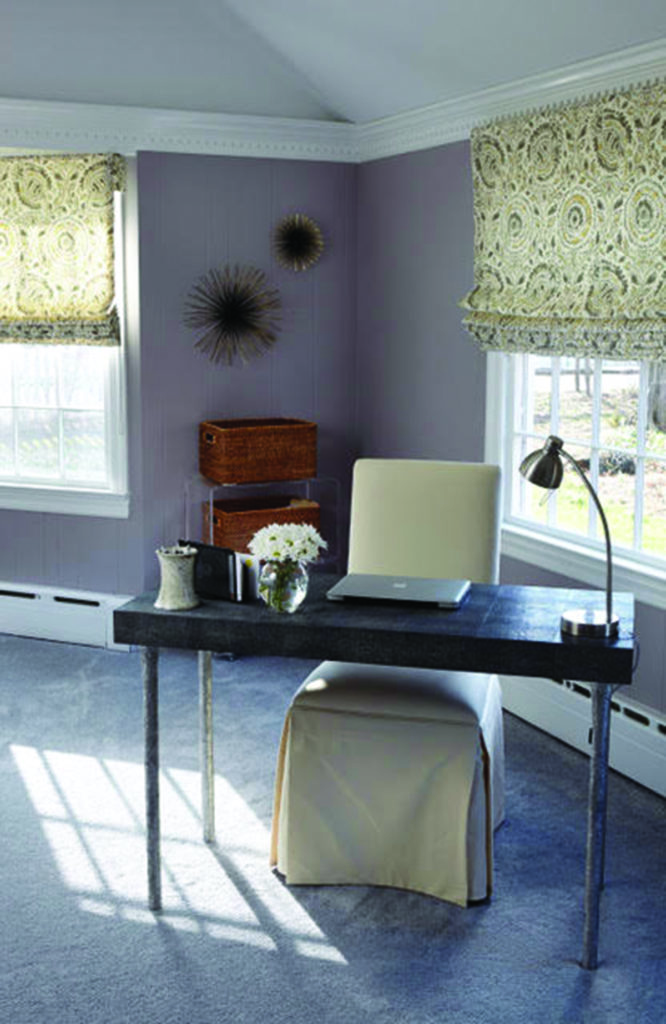
Working from home has its perks. In addition to typing away in the comfort of your pajamas, it lends itself to tackling tasks in a calmer setting than a traditional office environment. Creating a designated space to get into work mode while still at-home is the trick to maximizing efficiency, not to mention maintain work-life balance.
Whether you are self-employed or telecommuting, interior designer Jody Sokol, of her eponymous-named Northport firm, shared her expert tips on defining a professional working space that separates your career from your personal life.
Choose a Dedicated Area
One common mistake people make when setting up a home office is that they don’t always consider the rooms next to their home office and in many cases, the kids, pets and televisions can be a major distraction. It is essential to keep privacy in mind.
“Working from home is challenging on so many fronts so you need a space where your kids, pets and television don’t distract you from your work,” Sokol said. “If you can soundproof your space, even better.” Don’t overlook the layout, either. Sokol suggests asking yourself, “How does the room function for you?” And, “Is there enough room to move around comfortably without bumping into things?”
Consider Light and Color
No fluorescent bulbs here. One of the most important things to take into account when setting up a home office is the lighting. “Natural is best, but if that is not possible, use good overhead lighting,” Sokol said. Palette is also important for setting the tone. Think calming hues that soothe instead of bright and flashy colors. Some of the best colors for an office are off white, light blue, gray and pastel yellow, Sokol recommends.
Adequate Storage and Equipment
Another common issue people face when designing a home office space is creating enough storage for their office supplies and files. The dedicated spot needs to comfortably fit the essentials—desk, chair and computer—plus, file cabinets and necessary accessories like a printer. Another consideration is where the equipment will fit in relation to the windows and outlets. Sokol suggests creating a printing station with paper, printer and ink. She also notes the importance of installing plenty of shelves and cubbies for supplies.
Conceal Wires
The best way to conceal wires is to hide power strips and plugs if possible. “You probably will need to put a hole in your desk so you can run wires up and down and lace the wires through brackets to make them less visible,” she said. “It’s even better yet if you use a laptop and a wireless printer. But if you can’t, consider using a twist tie to tie your wires together to keep them more manageable.” Don’t forget to label your cables, which will make it easier when you need to identify what’s what. A cable sleeve keeps cables neater and shortening cables can also be helpful.


















